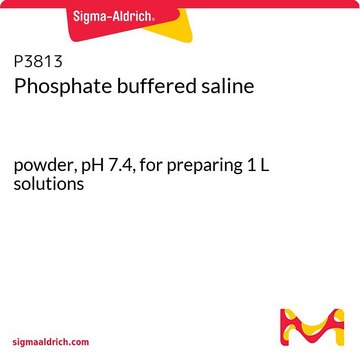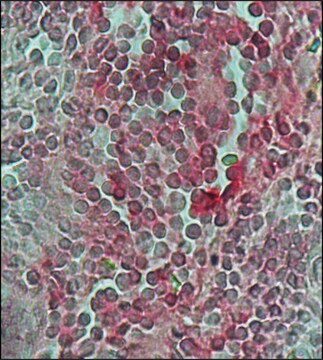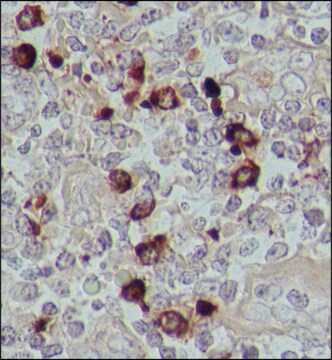AP120A
Goat Anti-Human IgA Antibody, IgG, and IgM, Alkaline Phosphatase
Chemicon®, from goat
About This Item
Produits recommandés
Source biologique
goat
Niveau de qualité
Conjugué
alkaline phosphatase conjugate
Forme d'anticorps
F(ab′)2 fragment of affinity isolated antibody
Type de produit anticorps
secondary antibodies
Clone
polyclonal
Espèces réactives
human
Fabricant/nom de marque
Chemicon®
Technique(s)
ELISA: suitable
western blot: suitable
Isotype
IgG
Conditions d'expédition
wet ice
Modification post-traductionnelle de la cible
unmodified
Description générale
IgM normally constitutes about 10% of serum immunoglobulins. IgM antibody is prominent in early immune responses to most antigens and predominates in certain antibody responses such as ′natural′ blood group antibodies. IgM (with IgD) is the major immunoglobulin expressed on the surface of B cells.
Monomeric IgA constitutes 5-15 % of the serum immunoglobulins whereas dimeric IgA is localized to mucosa surfaces such as saliva, gastrointestinal secretion, bronchial fluids and milk. Mucosal IgA plays a major role in host defence by neutralising infectious agents at mucosal surfaces. The production is usually local and antigen specific IgA producing B-cells can be found in regions under the lamina propria where they mature into dimeric IgA producing plasma cells. IgA deficiency is the most common immunodeficiency that may affect both serum and mucosal produced IgA.
Spécificité
Application
Secondary & Control Antibodies
Whole Immunoglobulin Secondary Antibodies
1:5,000-1:50,000 dilution can be used.
Optimal working dilutions must be determined by the end user.
Qualité
ELISA:
1:5,000-1:50,000 diltution can be used.
Forme physique
Stockage et stabilité
After reconstitution this product is stable for several weeks at 2-8°C as an undiluted liquid. DO NOT FREEZE. For extended storage after reconstitution, add an equal volume of glycerol (ACS grade or better) to make a final concentration of 50% glycerol and store at 2-8°C for up to 12 months.
Please note that the concentration of protein and buffer salts will decrease to one-half of the original after adding glycerol.
Informations légales
Clause de non-responsabilité
Vous ne trouvez pas le bon produit ?
Essayez notre Outil de sélection de produits.
Mention d'avertissement
Warning
Mentions de danger
Conseils de prudence
Classification des risques
Acute Tox. 4 Dermal - Aquatic Chronic 3
Code de la classe de stockage
11 - Combustible Solids
Classe de danger pour l'eau (WGK)
WGK 3
Certificats d'analyse (COA)
Recherchez un Certificats d'analyse (COA) en saisissant le numéro de lot du produit. Les numéros de lot figurent sur l'étiquette du produit après les mots "Lot" ou "Batch".
Déjà en possession de ce produit ?
Retrouvez la documentation relative aux produits que vous avez récemment achetés dans la Bibliothèque de documents.
Notre équipe de scientifiques dispose d'une expérience dans tous les secteurs de la recherche, notamment en sciences de la vie, science des matériaux, synthèse chimique, chromatographie, analyse et dans de nombreux autres domaines..
Contacter notre Service technique









